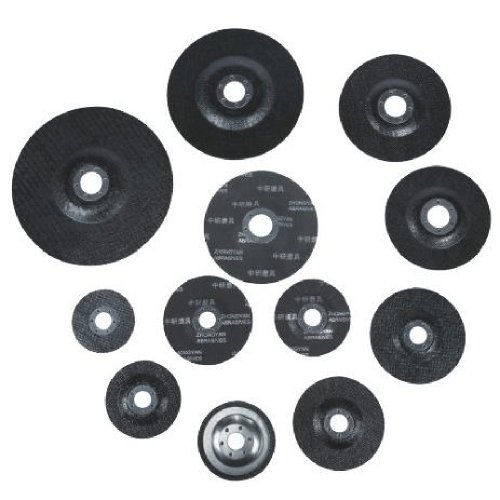Understanding the World of Power-Driven Equipment
Electric tools have revolutionized the way we handle construction, home improvement, and DIY projects. From simple home repairs to complex industrial applications, these powerful devices have become indispensable in our modern world. As technology continues to advance, the market offers an increasingly diverse range of electric tools designed to meet specific needs and preferences. This comprehensive guide will help you navigate the selection process and make informed decisions when investing in these essential pieces of equipment.
Essential Factors in Tool Selection
Power Source and Performance
When selecting electric tools, one of the first considerations should be the power source. Corded electric tools offer consistent power output and unlimited runtime, making them ideal for lengthy projects or heavy-duty applications. Cordless options, powered by rechargeable batteries, provide greater mobility and convenience, though they may require periodic recharging or battery replacement.
Performance metrics such as voltage, amperage, and motor type directly impact tool capability. Professional-grade electric tools typically feature brushless motors, which offer superior efficiency and longevity compared to traditional brushed motors. Understanding these specifications helps match the tool's capabilities with your intended applications.
Ergonomics and Comfort Features
The ergonomic design of electric tools significantly affects user comfort and productivity. Features like rubberized grips, balanced weight distribution, and vibration reduction systems help minimize fatigue during extended use. Tools with adjustable handles or multiple grip positions accommodate different working angles and user preferences.
Consider the tool's weight, especially for overhead work or extended use scenarios. While robust construction is important for durability, excessive weight can lead to user fatigue and reduced precision. Many manufacturers now incorporate lightweight materials without compromising tool strength and reliability.

Professional versus Consumer-Grade Options
Build Quality and Durability
Professional-grade electric tools are engineered for frequent use and challenging conditions. They typically feature metal gear housing, reinforced components, and superior thermal management systems. While these features increase initial cost, they often result in better long-term value through extended service life and reliable performance.
Consumer-grade tools, while more affordable, are designed for occasional use and lighter applications. They may incorporate more plastic components and simpler cooling systems. For DIY enthusiasts or occasional users, these tools can provide satisfactory performance while maintaining budget-friendly pricing.
Warranty and Support Services
Professional electric tools often come with comprehensive warranty coverage and dedicated service support. Manufacturers may offer features like free repairs, replacement tools during service periods, and priority technical assistance. These benefits can be crucial for professionals whose work depends on tool availability.
Consumer tools typically have more basic warranty coverage but may still offer adequate protection for casual users. When comparing options, evaluate the warranty terms, service network accessibility, and manufacturer's reputation for customer support.
Advanced Features and Technology Integration
Smart Technology and Connectivity
Modern electric tools increasingly incorporate smart features and digital connectivity. Tool tracking systems help prevent loss and theft, while usage monitoring capabilities assist in maintenance scheduling and performance optimization. Some models offer smartphone integration for customizing tool settings and accessing usage data.
Connected tool platforms can enhance workplace efficiency through features like inventory management, maintenance alerts, and performance analytics. These capabilities are particularly valuable for professional users managing multiple tools across various projects or job sites.
Safety and Protection Systems
Advanced safety features in electric tools protect both users and equipment. Electronic clutch systems prevent binding and kickback, while thermal protection circuits guard against motor damage. Some tools include electronic braking systems for immediate stopping when released.
Look for models with integrated dust collection systems, especially for tools used in confined spaces or on materials that produce fine particles. These features protect user health and maintain tool performance by preventing debris accumulation in sensitive components.
Cost Considerations and Value Assessment
Initial Investment Strategy
When budgeting for electric tools, consider the total cost of ownership rather than just purchase price. Factor in anticipated usage frequency, required accessories, and potential replacement parts. For users planning to expand their tool collection, investigating battery system compatibility across different tools can provide long-term cost benefits.
Consider starting with essential tools that match your immediate needs and gradually expanding your collection. This approach allows for better budget management while ensuring each purchase aligns with actual requirements rather than speculative future needs.
Long-term Economic Benefits
Quality electric tools can deliver significant long-term savings through reduced maintenance needs and higher productivity. Professional-grade tools often feature modular designs that facilitate repairs and updates, extending useful life and maintaining performance levels.
Energy efficiency improvements in modern electric tools can reduce operating costs, particularly in professional settings with frequent tool use. Consider these ongoing savings when evaluating different price points and feature sets.
Frequently Asked Questions
How often should electric tools be serviced?
Professional electric tools should undergo routine inspection and maintenance every 3-6 months, depending on usage intensity. Regular cleaning, lubrication, and brush inspection can prevent most common issues. Consumer-grade tools used occasionally may require annual checks, focusing on battery health and general functionality.
What voltage rating is best for home use?
For most home applications, 18-20V cordless tools provide an optimal balance of power and portability. Corded tools running on standard household current (120V in North America) are suitable for most DIY projects. Higher voltage tools are typically unnecessary unless tackling specialized or heavy-duty tasks.
Are brushless motors worth the extra cost?
Brushless motors typically justify their higher cost through extended lifespan, improved efficiency, and better performance. They require less maintenance and provide more consistent power output. For frequent users or professionals, the additional investment usually pays off through reduced downtime and longer tool life.


